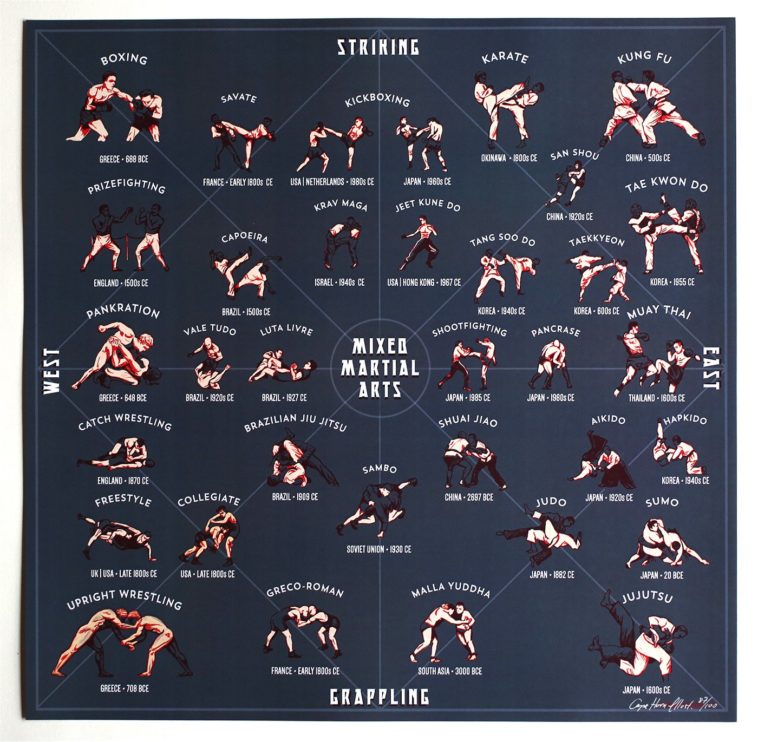The Development And Historical Context Of Martial Arts Worldwide
The Development And Historical Context Of Martial Arts Worldwide
Blog Article
Web Content By-Wilcox TRUE
Martial arts have a fascinating background that extends centuries and continents. You might discover it fascinating how old techniques like Shuai Jiao and Kalaripayattu prepared for contemporary combat methods. These self-controls not only highlight physical skills yet additionally reflect the societies that birthed them. As you discover their development, think about just how globalization has actually changed these traditional types right into crossbreed styles. What influences do you believe have formed today's martial arts landscape?
Ancient Martial arts: The Foundations of Battle
As you explore the world of ancient martial arts, you'll uncover the rich foundations that shaped battle techniques throughout cultures. Very early practices focused on Self-Defense and survival, typically including strikes, grappling, and weapons.
In ancient China, for instance, methods like Shuai Jiao highlighted throws and joint locks, while India's Kalaripayattu showcased dexterity and liquid movement. Japanese samurai developed Kenjutsu, a polished swordsmanship that highlighted discipline and method.
These martial arts offered not just for battle yet likewise as a way of individual development, instilling values like regard and willpower. The mixing of these techniques gradually laid the groundwork for the varied martial arts you see today, each mirroring the distinct approaches and needs of its culture.
The Social Impact on Martial Arts Development
While martial arts usually show the functional needs of a culture, they likewise personify the social worths and beliefs of their beginnings. When you discover various martial arts, you'll discover exactly how they're influenced by faith, viewpoint, and social norms.
For example, the emphasis on regard and discipline in Japanese martial arts comes from Zen Buddhism and samurai culture. In contrast, Brazilian Jiu-Jitsu advertises flexibility and method, shaped by the requirement for efficiency in a varied, modern atmosphere.
You could find that the rituals, uniforms, and training approaches mirror a neighborhood's background and identification. By comprehending these social influences, you strengthen your recognition of martial arts and their duty in shaping human experiences across the globe.
Modern Adaptations and the Globalization of Martial arts
Martial arts have actually changed significantly in current decades, adjusting to contemporary society and worldwide impacts. https://selfdefensemoveseverywoma25670.topbloghub.com/41391913/taekwondo-for-self-defense-practical-tips-and-methods 'll notice that conventional kinds have blended with modern methods, developing hybrid styles like MMA. These adaptations deal with diverse target markets, making martial arts easily accessible and enticing around the world.
With the rise of social media and digital platforms, you can discover tutorials and competitors from all corners of the world, breaking geographical barriers. This globalization has actually caused a common appreciation for different disciplines, from Brazilian Jiu-Jitsu to Taekwondo.
As you involve with these arts, you'll recognize they're not nearly combat; they promote health and fitness, discipline, and psychological well-being.
Ultimately, modern-day adaptations have enhanced the martial arts landscape, making it a dynamic and evolving practice.
Conclusion
In checking out the history and evolution of martial arts, you discover a fascinating blend of strategies, societies, and ideologies. From ancient techniques like Shuai Jiao and Kalaripayattu to the contemporary adaptability seen in mixed martial arts, martial arts show humankind's quest for Self-Defense and individual growth. As click this site involve with these practices, you not only get abilities but also a deeper recognition for the varied traditions that shape our world today. So, continue your journey and embrace the art of battle!
